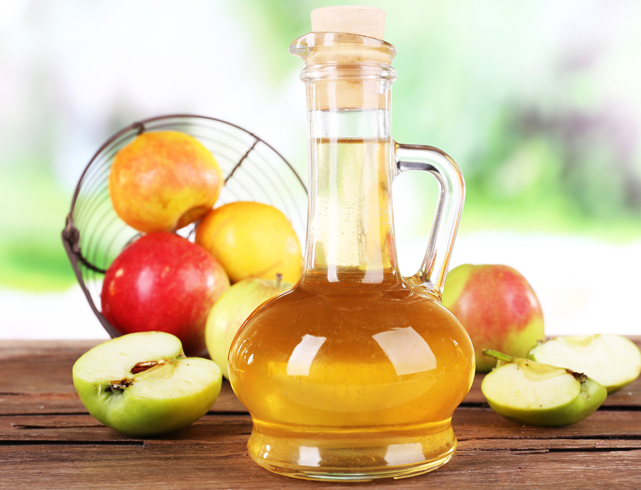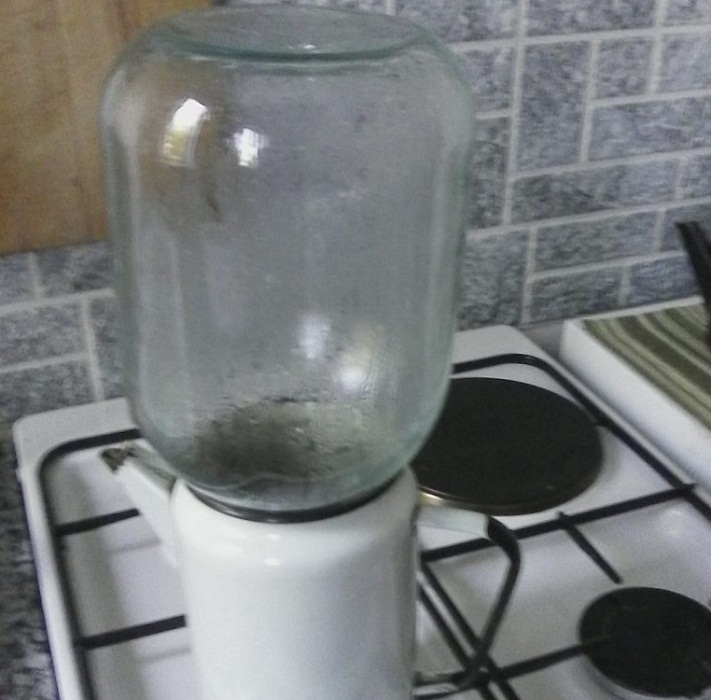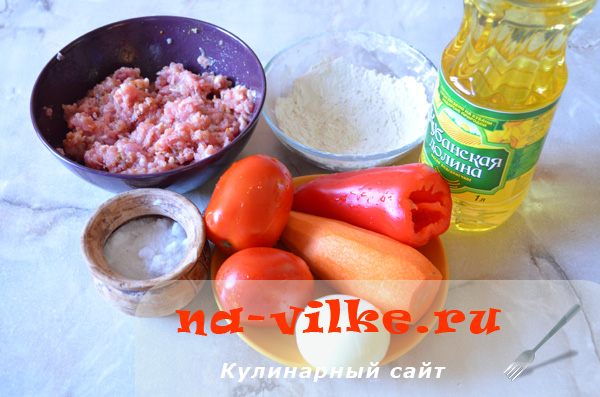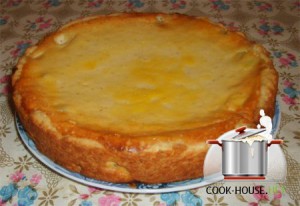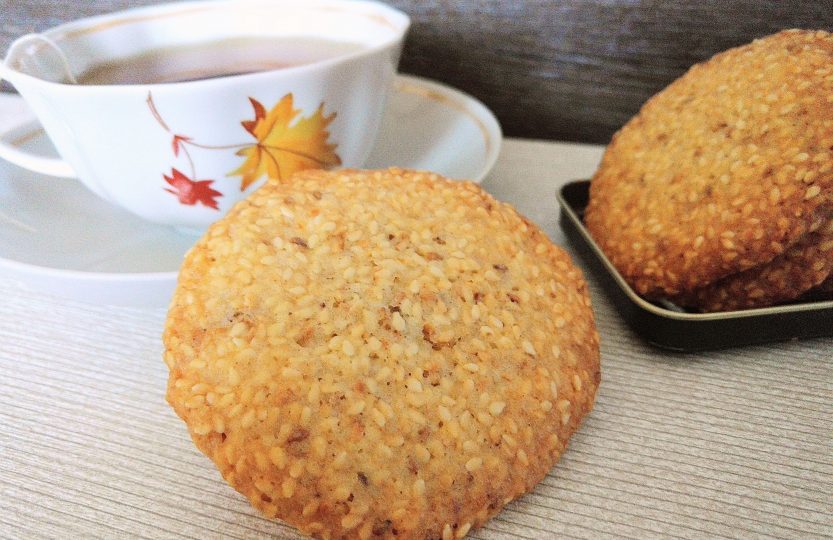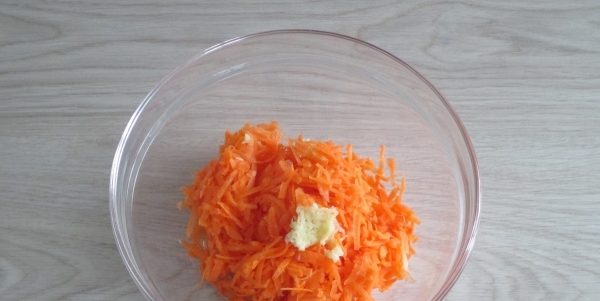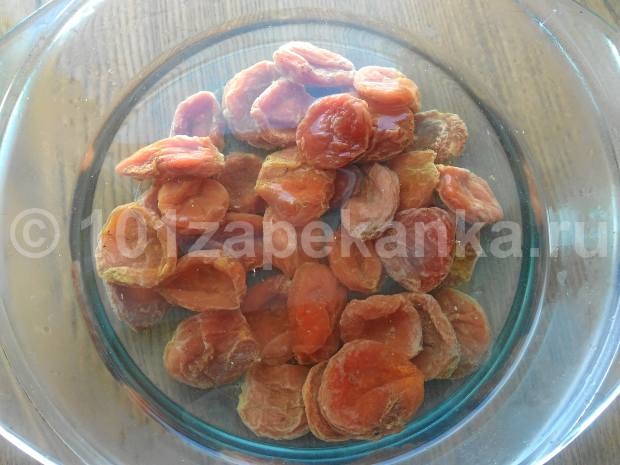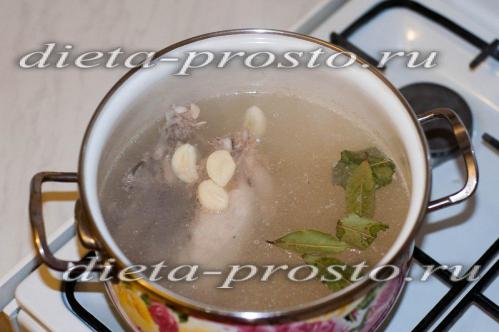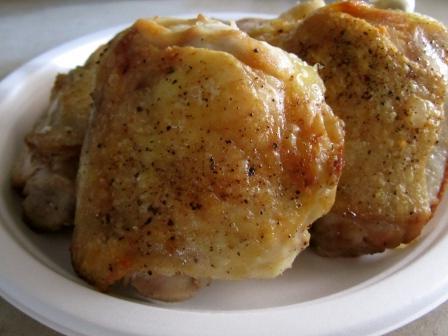How many percent in apple cider vinegar. An effective home remedy for cellulite - apple vinegar
Vinegar from apples is very useful for the body, so the question "how to make apple cider vinegar at home" is asked by many housewives. It is useful only when it is natural. When buying apple cider vinegar in bottles, we don’t know for sure which ingredients it is made from, and whether at least one apple was damaged in its production.
How many percent is apple cider vinegar?
When making your own homemade apple cider vinegar, it is important to know how many percent of acetic acid it contains. In natural vinegar, the strength is 4-5%, while synthetic vinegar has 9% strength.Let's see what's so magical about this apple cider vinegar?
It contains pectin, as well as a lot of vitamins, for example, C, E, A, B1. Enzymes, lactic and oxalic acid - all this is also in apple vinegar. Apple cider vinegar is used for tonsillitis, coughing and kidney stone disease.Take vinegar, only diluting with water, you can not drink it clean. This tool is also popular for weight loss, it is drunk between meals. It also lowers cholesterol.
In marinades, salads and other dishes, apple cider vinegar will be your friend and helper. Feel free to use it in the kitchen, replacing it with ordinary vinegar. And so, let's start preparing it.
Apple cider vinegar recipe number 1
Ingredients:
- applesauce - 700 g or apples - 1 kg;
- water - 1 l;
- sugar - 100 g;
- rye crackers - 20 g.
Cooking:
1. Take the finished applesauce. If it is not, you can cook it yourself. You need a kilogram of ripe apples, they should be grated on the smallest grater, you can chop in a blender or twist in a meat grinder.
2. Pour apple porridge into an enameled or glass dish and add 1 liter of warm water.
3. Add 100 g of sugar and 20 g of rye bread crumbs to applesauce. Cover the container with gauze and keep it at a temperature of 20-30 degrees in a dark place.
4. The apple mass should be mixed at least once a day with a wooden spoon.
5. After 10 days, put the mass on cheesecloth and squeeze. The resulting juice must be poured into a bottle and covered with gauze. Leave the juice to ferment further for 1.5 months.
6. Vinegar will be ready when the bubbles disappear and the liquid turns light. After that, the vinegar is almost ready, it should be filtered again and poured into glass bottles. Store the finished product at a temperature of 4-20 degrees in a dark place.
Apple cider vinegar recipe number 2
Ingredients:
- apples - 1 kg;
- water - 1 l;
- sugar - 100 g;
- yeast - 10 g.
Amount of finished vinegar: 1.5 liters
Cooking:
1. Apples in this recipe can be used whole, you do not need to peel them and get rid of the core.
2. Make applesauce in any way that is convenient for you.
3. Pour warm water into the apple mass, immediately add half the sugar and yeast.
4. Leave the mixture for fermentation in an enamel bowl for 10 days.
5. After 10 days, strain the mixture, add the second half of sugar, stir until it is completely dissolved. Pour the juice into bottles, cover them with gauze and leave in a warm place without sunlight for 1.5 months.
6. Vinegar will be ready when the fermentation process is complete and a precipitate forms.
7. At the final stage, the vinegar is filtered, closed tightly with lids and sent to a cold place.
As you may have noticed, the methods for making apple cider vinegar at home are very similar. And what can be different here, applesauce should ferment - this is the main truth. In the first case, the fermentation process was accelerated by rye crackers in us, in the second - yeast. Choose a convenient method and prepare your home vinegar.
It seems that cooking vinegar at home for a long time, the whole 1.5 months. But after all, active cooking in this process is only 20-30 minutes, the rest of the time vinegar is prepared without your participation.
Tip: apple cider vinegar, diluted with water in a ratio of 1: 2 (vinegar: water), perfectly quenches thirst and refreshes.
We hope you enjoyed our recipes and understood how to make apple cider vinegar at home without much effort or time.
The kitchen can not do without a measuring cup, kitchen scale, and from some time - and a calculator. Indeed, if 20 years ago only classic 9% vinegar was on sale (it is table vinegar, acetic acid, aka E260), then today there is nothing in supermarkets - essence, wine, apple and rice vinegars ... Is it possible to use all these products for home preservation? Of course. But what if table vinegar is specified in your recipe and you have an essence? Calculate the ratio you need. I will tell you how to calculate the amount of vinegar and essence.
For the unit of reference, we take the usual classic vinegar of 9%.
Essence
Its percentage is 70% or 80%. Acetic essence is worth buying if you are preparing salads that require a large amount of acid (for example, such vigorous little things as Adjika), or a large volume of workpieces.
1 teaspoon of vinegar essence replaces 8 teaspoons of 9% vinegar.
If you get the essence, and the recipe requires very little vinegar, essence can be diluted with plain clean water. As a rule, the instruction for such dilution is written on the label. If it is not, let me remind you:
- in order to get 3% vinegar, pour 22 parts of water into 1 part of the essence,
- for 6% vinegar, take 11 parts of some water,
- for 9% - 7 parts of water.
Important! Acetic acid solution, the percentage of which exceeds 30%, is considered dangerous for human health! Therefore, vinegar essence should be placed higher in the cabinet so that children do not reach it - it can cause burns on the skin, especially if it comes into contact with mucous membranes (mouth, eyes).
3 or 6% vinegar
Everything is simple here, the school multiplication table will help, which, most likely, has not been forgotten by you yet. How to calculate the amount of vinegar for preservation? For 1 teaspoon, 9% vinegar needs 1.5 to 6%, and 2 to 3%.
Wine, rice, apple, white vinegar ...
As a rule, the percentage of such products is 6% (but a smaller one can be found - both 5 and 4%). And this means that the amount of such a product is calculated by the same multiplication. And by the way, if you use this kind of vinegar in canning, congratulations: you have chosen the most useful option!
Special attention is worth white vinegar (not acetic acid, which was discussed above, but purified sherry or wine vinegar). This is a very valuable product with a strength of 4 to 6%.
Important! If natural vinegar you make yourself, calculate the percentage of its strength is more difficult, because you will not have a store label with the percentage of the product. In any case, it will be less “sour” than a store one, so home-made apple or wine vinegar is often added to salads, which are immediately served on the table, and not for conservation. However, if you have several liters of home vinegar, you can buy an alcohol meter - it will definitely tell you if this product can be added to jars.
Can I use for conservation rice vinegar? This product is most often bought for sushi. However, in Japanese cuisine, it goes to marinades too, so it’s possible! But the price of this product (if it is really fermented in a natural way) is quite high. Therefore, if you want to make preparations with good vinegar, wait for the season of apples and grapes, and when it ends, buy wine or apple vinegar (in spring or summer the price is higher than in late autumn or early winter).
Good luck with your conservation!
And don’t miss it - in it I will talk about blanks that can be done without vinegar at all. How to replace it? You will find out soon!
Table vinegar is an indispensable thing in the household that has no analogues and substitutes. Initially, this product was created as a preservative, however, modern housewives know many of the most diverse ways to use it. When buying this product in a store, many people pay attention to apple cider vinegar, but not many know that it is not just a fragrant salad dressing, but also a product that is very useful for the body, which should be introduced into the diet.

Product feature
In stores you can find several types of apple cider vinegar. They differ, as a rule, in the concentration of acetic acid in the composition of the product, so the percentage of its content is indicated on the labeling. So you can find 3%, 5%, 6% and 9% apple cider vinegar. The most common type can be safely called a product with a 6% content of acetic acid, however, this is not a completely correct definition. In fact, the proportion of acetic acid in such a product is only 5%, the remaining shares are malic, ascorbic and milk milk.
The composition of such a product includes a huge amount of vitamins, minerals and minerals. So, it just contains a huge amount of vitamin C, quite a lot of vitamins B1, B2, B6, as well as vitamins P, E and A. Minerals such as sulfur, copper, sodium, iron, magnesium, phosphorus and calcium are also found in the product in great numbers. In addition, it contains a rather high content of beneficial enzymes and amino acids.
Such a rich composition of apple cider vinegar is due to the method of its preparation. It is made thanks to the fermentation and fermentation of apples, therefore, in a relatively small amount of vinegar, the benefits and chemical composition of a huge number of apples are preserved.

Benefit
A lot of articles, scientific treatises and even books have been written about the benefits of apple cider vinegar for the body. The pioneer of this movement is considered to be an American doctor, a fan of naturopathy, D.V. Jarvis, who in his book "Honey and Other Natural Products" described in great detail the benefits of apple cider vinegar and how to make it at home. Russian scientist professor Neumyvakin is also a supporter of the use of apple cider vinegar, he has two books on the benefits of this product.

Scientists, supporters of this movement confidently say that apple cider vinegar is useful in such cases.
- This product improves blood vessels, tones their walls, so it is useful in the fight against varicose veins. This benefit is due to the presence of a huge amount of magnesium and B vitamins. Regular use of apple cider vinegar will completely eliminate vascular asterisks on the legs.
- As a gargle for the throat, it will help accelerate recovery from tonsillitis, viral and colds, as it is a good antiseptic and soothing effect.
- Due to the high content of vitamin E, phosphorus, fluorine and calcium, it will help to significantly improve the state of the nervous system, will have a beneficial effect in the treatment of depressive conditions and insomnia.

- A large amount of vitamin C will increase immunity and tones the general condition of a person, increase efficiency.
- Enzymes contained in this product improve the digestive system and are useful in the treatment of dysbiosis and food poisoning.
- Lactic, ascorbic and malic acids will help get rid of cholesterol plaques, remove excess carbohydrates from the body - this helps to rejuvenate the body and positively affects the process of losing weight.
- Regular consumption of apple cider vinegar stimulates the body to renew the blood composition, facilitates painful menstruation, and prevents bleeding.
- Pectins and potassium improve the condition of the heart, prevent thrombosis, and are an excellent prevention of heart attacks.
- Magnesium helps to normalize blood pressure.


Traditional medicine also notes the beneficial properties of apple cider vinegar. However, do not forget about the dangers of such treatment, do not drink vinegar in glasses. Any treatment should be taken dosed, approaching it with a sober mind. There are several completely safe ways to use apple cider vinegar that have been proven over the years and have a positive effect.
- As an antiseptic, it very well soothes skin irritations after mosquito bites, relieves itching and swelling.
- A bath with a small amount of apple cider vinegar will improve the condition of the hair, make it shiny and smooth, as well as tone tired skin, saturate nails with minerals and strengthen them, and help fight against fungal diseases.
- Lotions with this product treat young papillomas.
- Lotions with a film that forms on the surface of vinegar will help relieve joint pain and gout.
- The healing properties of an enema with a small amount of apple cider vinegar are not proven by medicine, however, popular practice suggests that in this way, the problem of constipation can be significantly alleviated. But the concentration of vinegar in it should be minimal (no more than a teaspoon per liter of water).



Harm
Despite the enormous benefits of this product, there are a number of contraindications for its use, which should not be forgotten in any case. People with diseases of the gastrointestinal tract should not consume apple cider vinegar. With irritation of the mucous membranes that occur with gastritis, ulcers and other inflammatory processes, acids can significantly aggravate the process. With diseases of the urinary tract, the acidity in the body is already increased, so you should not increase it even more - this can lead to the formation of erosion in the genitourinary tract.
With the formation of stones or the deposition of salts in the kidneys, you should not abuse this product. It can stimulate the growth and elimination of stones, which will lead to clogging of the canals, pain and inflammation in the kidneys. With hepatitis, exacerbations of the disease are also possible in case of an increase in acidity in the body. In addition, it is worth remembering caution in treatment. Some sources describe treatment methods in which you need to drink up to half a glass of vinegar per day. Such treatment is unacceptable - it can lead to kidney failure, cirrhosis and burns of the digestive tract.
Normal treatment methods do not exceed a tablespoon of vinegar per day, in addition, such treatment should not be long, its maximum period should not exceed two weeks.
Acetic acid destroys tooth enamel, so every time after taking vinegar, you must carefully rinse your mouth with cold water. In addition, in no case the use of vinegar on an empty stomach is allowed - it can damage the gastric mucosa, which will lead to gastritis. Exceeding the proportion of vinegar in an enema can lead to the destruction of microflora and dysbiosis, burns of the mucosa.
When treated with vinegar, a feeling of hunger is dulled. People who are not overweight begin to eat less food - this can lead to exhaustion, a lack of vitamins and minerals.
When choosing apple cider vinegar treatment, it is very important to weigh the pros and cons and you should definitely consult your doctor with a general practitioner who can assess the general condition of the body and warn about possible contraindications.

Subtleties of use
For medical use only natural apple cider vinegar is suitable. On the shelves of stores you can find a flavored analog, which will not have any beneficial properties of natural. The first and most important thing that should be indicated on the label is that the product is made in the process of natural fermentation. In order not to make a mistake in the choice, it is worth paying attention to the composition of the product, it should not contain dyes or flavors. Instead of this be sure to indicate the rate of apples per serving of the product.
The natural product will be more intensely colored, perhaps even slightly cloudy, opaque. Really high-quality apple cider vinegar will have a precipitate of apple pulp, the cost of such a product is slightly higher than the cost of a synthetic analogue. Immediately after opening the jar should smell like sour or ripe apples. If the product has a strong vinegar aroma - most likely, this is a fake. The use of apple cider vinegar for medicinal purposes must be regulated in accordance with the intended purpose. For example, to increase immunity or maintain it in the autumn-winter period, no specific or planned use of this product is necessary.
It is enough to replace ordinary vinegar with them when preserving blanks for the winter. Apple cider vinegar will fulfill absolutely all the functions of a regular one, in addition, it will add new notes to familiar workpieces and make them much more useful than usual.

The use of this miraculous product for weight loss should be the same as for the treatment of dysbiosis, since these body conditions are closely interrelated. To normalize the gastrointestinal tract, you need to take a mixture of a teaspoon of apple cider vinegar, half a glass of water and half a glass of kefir. You need to use this drug 2 times a day, 5 minutes before breakfast and dinner. If the dysbiosis is in a neglected state, then you should take 1 teaspoon of vinegar, diluted in a glass of warm water daily, 30 minutes before breakfast, on an empty stomach for 2 months.
The processes of burning excess body weight slow down and with excessive acidification of the body. To correct this situation, it is worth taking 1 tablespoon of the product diluted in 1 cup of warm water. Take such a medicine is in small sips, necessarily in the morning.During the treatment period, it is worth restricting the use of products that oxidize the body, such as coffee.

A natural product can be very useful in treating depressive conditions. For the treatment of nervous disorders, you need to prepare a mixture of 100 grams of honey and 2 teaspoons of vinegar, insist it for 2-3 days. Take 1 teaspoon in the morning and evening. With high blood pressure, you can take a solution of 1 teaspoon of vinegar and 150 milliliters of water for 1 teaspoon in the morning and in the evening, and also apply rags moistened in a weak vinegar solution to the feet.
In no case should you use undiluted apple cider vinegar.The total amount of vinegar taken during the day (in diluted form) should not exceed 2 tablespoons. Any treatment with this product should not last more than 1 month. If necessary, you can repeat the course of treatment, but only after a break, at least 2 weeks.
Starting any treatment with this product, it is necessary to undergo a full medical examination for contraindications, self-medication can be dangerous.

Domestic use
Natural apple cider vinegar can be used not only for food, but also as a universal household assistant. This product can be useful in a variety of life situations and greatly ease the chores of housewives. Most often, apple cider vinegar is used as a detergent for glass: just 1 tablespoon per 1 liter of water will help to easily wash the windows, make them shiny, and avoid stains. The same mixture is perfect for rinsing crystal or porcelain, in addition, it is an excellent tool for removing residual detergents from dishes after washing.

From time to time in the refrigerator, plastic containers, sealed dishes, persistent unpleasant odors are formed. Sometimes this smell is simply impossible to remove by any means. In such a situation, apple cider vinegar will also come to the rescue. You need to make it a weak solution in warm water and wipe the problem areas with a soft cloth moistened in it. Vinegar perfectly flushes all unpleasant odors. This is such an effective tool that it can easily cope with the problem of eliminating unpleasant odors from toilets of pets.
Plaque from coffee and tea leaves can remain on cups, teapots and saucers. To easily remove this brown coating, you need to slightly moisten the dishes, rub them with salt, pour in a little vinegar and rub them with a damp sponge. The plaque will be removed with ease, but after such cleaning, you must remember to rinse the dishes thoroughly with plenty of water so that the remains of vinegar do not corrode the surface of the dishes.


Greasy stains on clothes, furniture or carpets often cause a lot of trouble and cause grief for the prudent and thrifty housewives. To get rid of stains, you need to moisten the problem areas and rub them abundantly with baking soda. Then pour the prepared areas with a small amount of vinegar and leave until the violent reaction stops. In the case of clothing, it must be washed immediately in the washing machine. If the stain was removed from the furniture - it must immediately be thoroughly vacuumed. In the case of carpeting, it needs to dry well so that the remaining soda is well removed from the pile, so it is better to vacuum such a stain the next day after cleaning.
The bathroom and the bathroom are a place with high humidity. It is in these rooms that fungus and mold infection are often found. To prevent their appearance or stop the spread, it is enough to occasionally carry out preventive cleaning with a mixture of water and apple cider vinegar in equal proportions 1: 1. The composition must be poured into the sprayer and carefully sprayed onto the surfaces around the wash basin, bathtub, toilet bowl, tile and its seams, leave everything for 10-15 minutes. Then wash the composition off the surface with plain warm water. In addition, such a solution can easily whiten the toilet, washstand and bath. To do this, pour them cleaned surfaces and leave overnight, rinse the composition in the morning.


Apple cider vinegar will be appropriate in the arsenal of artists. It is useful for brush cleaning. To do this, put the brushes in an old saucepan and pour vinegar, leave for an hour. Then you need to put the saucepan on the stove and bring to a boil. After this, the brushes will become soft and smooth, it is important to rinse them under running water. The pan also needs to be washed immediately so that the paint from the brushes does not eat into its walls. Using this method of cleaning, it is very important to be as careful as possible, to avoid getting steam in the eyes or inhaling it - this can cause mucous burns.
Vinegar is a great antistatic. So that synthetic things do not become electrified, do not stick to the body and tights, and are not hit by discharges of current, you need to add half a glass of vinegar during washing. Residual acids that precipitate in the fibers of the tissue will become a barrier to the formation of static energy.
Gardeners use apple cider vinegar to control pests. If a harmful plant regularly sprouts on the site and it is not possible to eradicate it, you need to water it with apple cider vinegar. Acids will enter the inner layers of the root system, will be distributed throughout its area and will burn the plant from the inside.
There are many problems that can be eliminated apple cider vinegar, this is a universal household tool, which is also very cheap in contrast to household chemicals.

Recipes
To avoid the troubles that may arise due to the use of low-quality apple cider vinegar for medicinal purposes, it is better to make a high-quality natural product at home. There are several cooking options for this product: yeast, classic yeast-free, as well as recipes with honey. All of them are equally useful, since any of them retains the concentrated beneficial properties of a large portion of apples, however, the presence of yeast may be a contraindication to the use of such a product.
In addition, when exposed to yeast during the preparation of vinegar, it is not wine alcohol that is produced, but ethyl - it poses the greatest danger to weakened organisms and is addictive, so you should choose the most classic way to prepare apple cider vinegar. Despite the peculiarities of the recipes, the preparation of natural apple cider vinegar always consists of three stages.
- The first stage is fermentation.At this stage, apple wort and sugar gradually produce alcohol, at the end of this process, young wine with a strength of up to 10% is obtained.
- The second stage is souring.At this stage, the wine succumbs to air, colonies of the bacterium Acetobacteraceae multiply in it, they turn alcohol into vinegar.
- The third stage is jigging.At this stage, vinegar is carefully filtered from the wort and defended.
Do not be afraid of harmful microbes - they will still die in the process of fermentation.
Prepared fruits need to be cut into slices, remove the stalks and seeds and pass through a meat grinder. Juice and cake should be transferred to open-top dishes (saucepan or basin), covered with gauze in order to provide air access, but protected from insects and other pollutants. In this state, you need to leave the mass for several days. It must be stored in a warm room, it is important to stir 2 times a day, every 12 hours.
When a plentiful foam appears on the surface of the wort, the mass begins to hiss and gets the smell of fermentation, the mass must be filtered through gauze. Dry waste will no longer be needed, and the liquid must be poured into glass bottles, filling them in 2/3 of the volume. In each bottle, add 1 tablespoon of sugar and mix.
The bottles should be covered with a lid with a water lock or a medical glove with a finger punctured with a needle - this will protect the product from exposure to air, but at the same time allow fermentation vapors to go out.
On a note
Store apples are also often unsuitable for cooking vinegar, since their surface is most often treated with various kinds of preservatives. The most important thing in apples is to preserve the natural, living yeast that lives on the peel. During cooking in no case can you use metal containers, since the secreted acid will corrode it and metal particles will enter the final product.
Sugar can be replaced with honey - this will make the product even more useful and add subtle honey-floral notes to its taste. The proportion of honey per share of the fermented stock should be the same as the proportion of sugar.
The basis of apple cider vinegar is the juice resulting from the fermentation of apples. To make such vinegar, you will need to chop the apples, and then pour them with water. After adding sugar, the fermentation process begins, the result of which is the formation of acetic acid. At the end of the fermentation procedure, the liquid is filtered and bottled.
In cooking, apple cider vinegar is used as an acidic supplement to salads, vinaigrettes and other dishes. At the same time, apple cider vinegar itself is a healthy dietary and medicinal product.
Benefit
1. The healing properties of apple cider vinegar are largely determined by the high content of potassium in it, which is an essential component of tissues. The fact is that potassium inhibits the development of atherosclerosis, acts as an antiseptic, cleansing the body of staphylococci and streptococci, it is necessary for children for normal growth and development.
Potassium deficiency can be indicated by:
a) a weakened mental reaction, painful indecision, memory impairment;
b) increased sensitivity to cold, cold legs and arms;
c) the formation of corns, hardening of the skin on the soles of the feet.
d) constipation;
e) susceptibility to colds and infectious diseases;
e) lack of appetite, nausea, urge to vomit;
g) long healing wounds and abrasions;
h) intermittent skin itching and acne on the skin;
i) twitching of the eyelids and corners of the mouth;
j) frequent leg cramps at night.
k) unreported fears, insomnia, increased anxiety;
m) joint pain, arthrosis.
2. With the help of apple cider vinegar treat a general breakdown, exhaustion of the nervous system, metabolic disorders.
3. Apple cider vinegar helps reduce high blood pressure, helps with liver and kidney diseases associated with the formation of stones.
4. Natural malic acid, which is found in homemade apple cider vinegar, is converted in the body into glycogen, a reserve source of energy.
5. Apple cider vinegar contains many useful trace elements and components, among which it is worth noting vitamins A, B1, B2, B6, C, E, sodium, silicon, calcium, magnesium, pectin, phosphorus.
Harm
Apple cider vinegar is contraindicated in cases of gastric and duodenal ulcers, gastritis with high acidity, and also with increased sensitivity of tooth enamel. People who do not tolerate apple cider vinegar can replace it with a sweet decoction of fresh apples.Vinegar is a product obtained during the life of acetic acid bacteria. These amazing bacteria are present everywhere where the process of sugar fermentation takes place, the natural result of which is the formation of ethanol. Once in an environment containing alcohol, acetic acid bacteria begin to synthesize vinegar.
Curious historical facts
- Translated from ancient Greek, “oxos” means “sour”.
- Humanity got acquainted with vinegar as long ago as it did with wine: ancient manuscripts testify to this. Already in ancient Babylon, its inhabitants were able to make date wine and date vinegar. And that was almost seven thousand years ago.
- Ancient people used vinegar as a seasoning, household antiseptic, as well as hygiene and medicine.
- Mention of vinegar can be found in the Bible and in the Sunnah. In Chinese manuscript sources, information about vinegar began to appear three thousand years ago, and Japanese evidence dates back to the fourth century AD.
- Louis Pasteur in 1864 scientifically proved that vinegar is a product of microbiological synthesis.
What is vinegar made of?
Almost any foodstuff containing natural saccharides (maltose, glucose, fructose) can be a raw material for vinegar production.

Due to the action of yeast, which starts the fermentation process, fermented natural sugars are converted to ethyl alcohol, which, under the influence of acetic acid bacteria, is converted to natural vinegar.
Natural vinegar preserves the taste and aroma of the raw materials used for its production. So what are the varieties natural vinegar most popular in different countries of the world?
- Wine vinegar - a product resulting from the oxidation of wine. From white wine receive white vinegar, from red wine - red. Wine vinegar, characterized by its mild taste, is used to prepare delicious desserts, fruit salads and gourmet sauces.
The most valuable and aromatic varieties of wine vinegar are made from the best brands of expensive wine (pinot gris, champagne, sherry), keeping them in oak barrels.
- Apple vinegar, the production of which is apple cider, has a golden color and a pleasant aroma of apples. The concentration of natural apple cider vinegar can be comparable with the concentration of vinegar essence, therefore, to make a product ready for use, it is recommended to dilute it with either drinking or slightly sweetened water, as well as fruit juices.
Apple cider vinegar is a vivid representative of fruit and berry vinegar, the raw materials for which are berry or fruit wines. Vinegar can also be peach, currant, sea buckthorn, raspberry.
In cooking, the use of apple cider vinegar comes down to dressing salads and use in the preparation of marinades and sauces.
- Beer Vinegarobtained from beer, in large quantities consumed by residents of Austria and Germany. The taste and aroma of this product are determined by the taste of the drink used.
- Malt Vinegar - a favorite product of the inhabitants of Britain. The result of the fermentation of barley, dear malt vinegar with its dense texture and deep brown color resembles the famous English ale. There are cheaper varieties of malt vinegar, which are obtained by diluting acetic acid, flavored with caramel essence.


Extract of balsamic vinegar takes from six years to a quarter century, and the most valuable breeds of cherries, junipers, chestnuts and oak are used to make barrels intended for this process.
- Rice vinegar (pale yellow liquid with a peculiar aroma and mild taste) - a product obtained in the process of oxidation of rice wine or during the fermentation of rice. They are seasoned with noodles and soups, salads from fruits and vegetables, used for cooking rice, intended for making sushi.
The most expensive varieties of rice vinegar are black and red vinegar - the favorite seasonings of the Chinese. Red rice vinegar has a pleasant sweet taste. The aroma of black vinegar is more intense, with a slight shade of haze.
- Vinegar may be alcoholif the basis for its production is food ethyl alcohol.
- When flavoring alcohol vinegar with natural extracts of herbs (thyme, dill, basil, garlic, parsley, oregano, tarragon) and various spices it turns out flavored alcohol vinegar.
All of the above types of vinegar made from natural raw materials are natural, but there is also synthetic vinegar obtained by diluting acetic acid, which is obtained in the laboratory.
How to get acetic acid?

There are several ways to produce acetic acid:
- It is produced from natural gas using a chemical synthesis method.
- It is a by-product obtained in the manufacturing process of chemical fertilizers.
- Lesochemical acetic acid is obtained from the processing of wood waste (sawdust).
Absolute (or glacial) acetic acid is a product whose concentration is 100%. When diluting glacial acetic acid with water to 70-80%, an acetic essence is obtained, which is indicated under the guise of additive E260 in the list of ingredients that make up the product.
In a number of countries (for example, Bulgaria, the United States and France) the use of synthetic acetic acid for food purposes is prohibited.
Acetic essence can be bought both in pure form or in the form of table vinegar, which is an aqueous (3-9%) solution of acetic acid. You can bring the taste of synthetic table vinegar closer to the taste of a natural product if you insist on spices, aromatic herbs and fruits or use artificial flavors.
How many percent in table vinegar?
On the shelves of modern grocery stores you can find table vinegar with a strength of 3%, 6% and 9%. Vinegar with a 9% acetic acid content is used for the preparation of pickled pickles. It is strong for eating, but with 3% and 6% vinegar, you can safely dress salads and improve the taste of your favorite dishes with it.
It is curious that Europeans consume almost four liters of natural vinegar throughout the year, which is 20 times the amount of the same product in the diet of Russian citizens (our compatriots are limited to only 200 ml of this seasoning).
Housewives use vinegar essence for self-cooking table vinegar. Depending on the purpose of the destination (salad dressing, preparing marinade, preserving fruits or vegetables), vinegar of different concentrations may be needed in the kitchen, so every housewife must do it correctly.

Follow the exact recipe for the preparation of table vinegar at home is necessary not only in order not to spoil the taste of the dish, but also for one more reason. The fact is that acetic acid and water have a different density, therefore, to obtain a high-quality solution, it is necessary to carefully observe the correct ratio of parts.
Concentrated vinegar essence can not be used undiluted for cooking, as this is fraught with poisoning or severe burns.
How to cook 9% vinegar? Table vinegar of this concentration is used when preserving vegetables and fruits. To prepare 9% vinegar, you can use vinegar essence with a concentration of 30%, 70% or 80%.
How to make 9% vinegar:
- When using 30% vinegar essence, one part is diluted with two parts of water (for example, two tablespoons of water are taken for one tablespoon of essence).
- Making table vinegar 9% of 70%, the amount of water is increased to seven parts per one part of acid (a spoon of essence for seven tablespoons of water).
- 80% of the essence requires dilution with an amount of water eight times the volume of the solution of acetic acid (that is, a tablespoon of the essence should be diluted in eight tablespoons of water).
There is a universal formula with which you can easily determine how much water you need to dilute the vinegar essence to obtain table vinegar of the required concentration.
Universal formula for preparing table vinegar

If the concentration of the vinegar essence you have is divided by the concentration of table vinegar that you need to get, you will get a number showing how many times the amount of the resulting solution should exceed the amount of the taken essence.
Let us illustrate with an example: We have 80% vinegar essence. We need to get 5% table vinegar. Divide 80 by 5 and get 16. Therefore, one part of the essence must be diluted with 15 parts of water. If the division results in a fractional number, it should be rounded up.
Another example: you want to get 3% vinegar from 70% vinegar essence. Divide 70 by 3, we get 23.3. We round the result to 23.5 and conclude that we need to take 22.5 parts of water for one part of the essence.
Most often, vinegar of this concentration is used to pickle meat.

How to get 6% vinegar?
- Having an essence of 80% strength, one part is diluted with twelve parts of water.
- At 70% acid strength, 10.5 parts of water are added to it.
- To dilute one part of a 30% essence, four parts of water are added.
As a measure, in this case, ordinary piles or small glasses are most often used.
How much vinegar is in a tablespoon?
Since vinegar is a seasoning with a pronounced sour taste, its overdose can spoil the taste of any dish (especially the one you cook for the first time). Therefore, it is important for inexperienced housewives to know:
1 tablespoon \u003d 15 g vinegar
What is the density of vinegar?
Aqueous solutions of acetic acid have a different density depending on the strength of a particular solution. The density of absolute (glacial) acetic acid is 1.05 kg / l.
The density of vinegar essence has the following indicators:
- 30% - 1.0383 kg / l.
- 70% - 1,0686 kg / l.
- 80% - 1.0699 kg / l.
Table Vinegar Density:
- 3% - 1.002 kg / l.
- 6% - 1.006 kg / l.
- 9% - 1.011 kg / l.
All of these values \u200b\u200bare valid at room temperature of 20 degrees Celsius. It should be noted that an increase in ambient temperature affects the decrease in the density of these solutions.

Vinegar is most often drunk by mistake when a hazardous liquid is either poured into an inappropriate container, or when it is stored in an easily accessible place and falls into the hands of young children or intoxicated family members. There is another reason why acetic acid can be harmful to human health. So do suicides who do not think about what painful death they doom themselves to.
The severity of the lesion is determined by the amount of acetic acid drunk and the strength of its solution. Danger to life can be solutions, the strength of which exceeds 30%.
Consequences of getting concentrated acetic acid inside the human body:
- With the most favorable outcome, a person can get extremely painful burns to the mouth, lips and esophagus. This condition is always accompanied by painful and quite prolonged pains, especially noticeable at the time of eating.
- Healing of burns inevitably leads to constriction and deformation of the tissues of the mucous membranes and adjacent internal organs. In severe cases, severe tissue damage can lead to complete overlap of the esophagus, which entails a violation of swallowing function.
- Pairs of vinegar often cause burns to the trachea and larynx. This can lead to partial or complete loss of voice and breathing problems (it will be difficult).
- If a large amount of a concentrated solution of acetic acid enters the human body, this can result in very serious burns to the stomach, which already has an acidic environment, since the composition of the gastric juice includes no less concentrated hydrochloric acid.
If acetic acid enters the stomach, a person may experience vomiting of blood and severe gastrointestinal bleeding. The worst consequence of a fatal error is a complete perforation (or perforation) of the stomach with the formation of a through hole in its wall through which everything contained in it can enter the abdominal cavity.
In this case, even if timely and qualified medical care is provided, stomach scars will inevitably appear inside the stomach, due to which part of this organ will subsequently have to be removed.

Where is balsamic vinegar used?
Balsamic vinegar (or balsamic), called the "king of vinegar", has a fairly wide range of applications.

- In cooking, salads are seasoned with them, served with fish, meat, vegetables (both as an independent seasoning and as an ingredient in gourmet marinades), and used to enrich the taste of the first and second courses.
Balsamic vinegar should not be exposed to thermal effects, since at the same time it will completely lose all its useful qualities. It is served only chilled to the table, and adding it to hot dishes, cool them a little.
- In medicine, balsamic vinegar is used as an antibacterial agent, washing it with wounds, rinsing the throat or rubbing the skin. Due to its low calorie content and its rich vitamin composition, balsamic sauce is used as a vitamin supplement to the diet of those who wish to lose weight. Due to the antiseptic properties, balsamic is used as part of drugs that accelerate wound healing and regeneration of the body.
Balsamico is used as an effective tool to help cope with cellulite.
- Expensive varieties of elite balsamic vinegar are used in cosmetology, using it to produce expensive lotions, gels, creams and other hair and skin care products.
How to cook rice vinegar?
Making rice vinegar is troublesome, but since it will be possible to get a healthy and tasty product, it’s worth trying to make it on your own.
About the use of rice vinegar:
Cook rice vinegar at home:
- After taking 300 g of rice, we will thoroughly rinse it under a stream of running water, put it in a glass bowl and pour 1200 ml of water into it.
- We place the bowl for four hours in the heat, after which we take it out to the cool room for a day.
- Filter the liquid through several layers of gauze and pour 900 g of granulated sugar into it.
- Stirring the liquid until sugar is completely dissolved, put it in a water bath and cook for half an hour.
- After waiting for the syrup to cool, pour it into a two-liter glass jar and pour in dry yeast (a third of a tablespoon).
- We give the liquid to ferment for a week, after which we transfer it to another jar and, having tied the neck with clean gauze, put it in a dark place for 4-6 weeks. From time to time we take a sample.
- When the vinegar gains a sweet taste with a slight acidity and becomes aromatic and translucent, we filter it thoroughly, boil it and pour it into bottles, tightly closing with sterile lids.
How to cook apple cider vinegar? How to make vinegar from apples?

To prepare apple cider vinegar, you can use:
- Pest damaged apples.
- Overripe fruits.
- Apple cake left after making apple juice.
- Falling down.
For each kilogram of apple mass take from 50 to 100 g of granulated sugar.
Cooking sequence:
- Apples are thoroughly washed, cut off rot, remove damage and cut into pieces.
- The apple mass is placed in an enameled container, poured with water heated to 70 degrees, sugar is poured. You can use fermented juices and acidified jam. Thoroughly mixing the mass, make sure that the liquid layer above it is at least 3-4 centimeters. On top you can put a wooden plaque with a load.
- The container is left for a couple of weeks in a warm place for fermentation. The optimum room temperature should be from 18 to 22 degrees.
- Remember to stir the mass from time to time. After two weeks, the fermented liquid is bottled using a filter. Filling the bottles to the top should not be, as the liquid will still ferment. After two weeks, the procedure is repeated, pouring vinegar into other bottles, again without adding it to the very top.
- In a couple of weeks, the product will be finally ready. This time, the bottles are filled with apple cider vinegar to the very neck and sealed with sterile corks. Storage of the finished product is carried out in a cool room with an air temperature not exceeding 20 degrees.
What is apple cider vinegar good for?
Useful properties are possessed only by a natural product that does not contain any colorants and flavorings.
Apple vinegar, benefit for health:
- It is beneficial for digestion, as it is able to normalize the beneficial microflora, destroying putrefactive bacteria and preventing the penetration of infections into the body.
- Helps to improve intestinal motility.
- Improves lipid metabolism and fat breakdown.
- Prevents the development of osteoporosis.
- It is a good prophylactic against cancer.
Using purchased apple cider vinegar, carefully read the label and make sure that it contains no acetic acid. If such an ingredient is still present in the recipe, before you is not apple, but ordinary table vinegar.
- Stimulates the work of the brain and the entire nervous system.
- Helps the body get rid of toxins, improving the cleansing function of the liver and thereby contributing to the fight against excess weight.
- It has a diuretic effect and prevents the formation of edema, removing excess fluid from the body.
- By making the vessels elastic, it normalizes blood circulation in the veins.
- The healing properties of apple cider vinegar can be used to treat inflammatory processes in the oral cavity and pharynx.
Does apple cider vinegar help with varicose veins?

Apple cider vinegar in folk medicine has long been used to treat varicose veins in the following forms:
- In the form of rubbingapplied twice a day. Before rubbing, it is recommended to take a shower and do not rinse the vinegar after the procedure.
- In the form of compresses.Gauze impregnated with apple cider vinegar is applied to the problem area, wrapped with a film, insulated and left for half an hour, with feet on a high pillow.
Apple cider vinegar treatment gives good results with the regular use of this product twice a day.
- In the form of dousing.For the procedure, it is necessary to prepare a medical solution consisting of two liters of water and a glass of apple cider vinegar. Having taken two basins, they sit on the edge of the bath and lower their legs into one of them. Slowly water problem areas with the prepared solution. When the solution is over, rearrange the legs in another basin and repeat the manipulation. The duration of the pouring is at least five minutes.
- In the form of a medicinal drink.To prepare it, take 200 ml of water and two tablespoons of apple cider vinegar. Take this portion twice a day, in the morning and evening hours.
How to knock down the temperature with vinegar?

Rubbing with vinegar at a temperature is a gentle and quick way to help alleviate the condition of a pregnant woman, adult, or small child when there is no suitable medicine at hand. How to do it?
- The grinding solution is prepared as follows: in an enameled container mix 500 ml of warm water and a tablespoon of apple cider vinegar.
- Having undressed the patient to underwear, they wipe the entire surface of his body with this solution, starting from the head and moving from the torso to the limbs.
- Sometimes a terry towel is impregnated with a solution of vinegar, wrapped in a patient and put him in bed, wrapped up in a good blanket.
- If the temperature rises again after wiping, the procedure can be repeated.
How to extinguish soda with vinegar? Why quench soda with vinegar?
How to extinguish soda with vinegar? Soda, used to loosen the dough, in dry form can only spoil its taste, because it lacks carbon dioxide, which can add fluffiness to baking. The addition of vinegar gives rise to a chemical reaction that promotes the release of carbon dioxide. How to do it right?
- The required amount of soda is placed in a spoon and add a few drops of 9% vinegar (5-6 drops per teaspoon).
- A chemical reaction will begin immediately. Without waiting for its end, immediately pour the contents of a spoon into the future dough and quickly knead: only in this case, the released carbon dioxide will not be wasted.
- Ready dough should be baked immediately, then lush baking is guaranteed.
How to pickle onions in vinegar?

Onion marinated in vinegar is ideal for barbecue made from poultry or meat. It is prepared quickly, and the taste is excellent. How to pickle onions in vinegar? You will need:
- 4 onions.
- A glass of cold water.
- 7 tablespoons of 9% vinegar.
- 3 tablespoons of granulated sugar.
- ½ tablespoon of salt.
Cooking method:
- Mix vinegar, water, salt and sugar.
- Pour the chopped onion into the resulting marinade.
- We send it to the refrigerator. In half an hour, the onion will be ready.
How to cook a cabbage salad with vinegar?

Ingredients:
- A small (500 g) head of cabbage.
- 2 tablespoons of 9% vinegar.
- 2 tablespoons of vegetable oil.
- Salt and sugar - the taste of the hostess.


